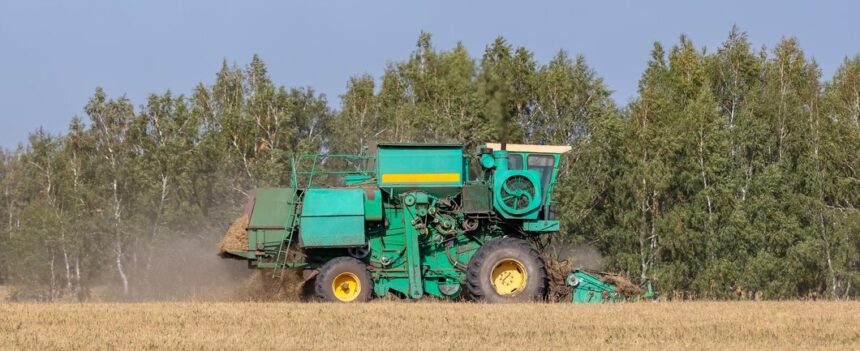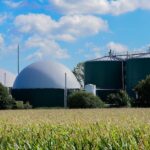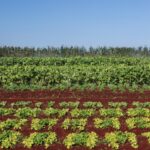Choosing the right fertilizer and applying it correctly is crucial for crop health, productivity, and sustainability. In South Africa, where diverse soil types and climates exist, understanding how to select and apply the right fertilizer using spreaders can significantly enhance your farming success. This guide will walk you through the process of choosing the right fertilizer and using spreaders efficiently for optimal crop growth.
1. Understanding Fertilizer Types
Fertilizers are available in several types, each catering to specific crop needs. The main types include:
- Nitrogen Fertilizers: These are crucial for promoting leafy, vegetative growth. They are often used for crops like maize, wheat, and leafy vegetables.
- Phosphorus Fertilizers: Phosphorus supports root development and flowering. It’s especially important for crops like potatoes, beans, and sunflowers.
- Potassium Fertilizers: Potassium enhances the plant’s overall health, improving disease resistance, drought tolerance, and fruit quality. It’s essential for fruits like citrus and tomatoes.
- Micronutrient Fertilizers: These provide smaller quantities of nutrients such as iron, zinc, and manganese, which are vital for plant enzyme systems and growth regulation.
- Organic Fertilizers: These are made from natural materials like compost, manure, or seaweed. They improve soil structure and provide a slower, steady release of nutrients.
2. Know Your Soil Needs
Before choosing a fertilizer, it’s essential to assess the nutritional needs of your soil. A soil test will tell you what nutrients are lacking or in excess, helping you avoid over-fertilizing, which can lead to nutrient imbalances and environmental damage.
- Soil Testing: Conduct soil tests at least once a year to understand its pH and nutrient levels. You can either send soil samples to a laboratory or use home test kits.
- Soil pH: Fertilizer effectiveness depends on the soil’s pH. For example, some fertilizers are more effective in slightly acidic soils, while others work better in neutral or alkaline soils.
3. Choose the Right Fertilizer Based on Crop Type
Different crops require different nutrient ratios. Understanding the specific needs of your crops will guide you in choosing the correct fertilizer:
- Cereal Crops (Maize, Wheat, Barley): These crops typically require high nitrogen content for strong growth, along with adequate phosphorus and potassium for root and grain development.
- Legumes (Beans, Lentils, Peas): Legumes have a high need for phosphorus to promote root and pod development, and they often require less nitrogen due to their ability to fix nitrogen from the air.
- Fruit Crops (Citrus, Apples, Grapes): These crops require a balanced mix of nitrogen, phosphorus, and potassium to support both vegetative growth and fruit development. Potassium is particularly important for enhancing fruit quality and disease resistance.
- Vegetables (Tomatoes, Potatoes, Carrots): Vegetables require a balanced fertilizer that supports both root growth and high-quality fruit or vegetable production.
4. Consider the Fertilizer Application Rate
Each fertilizer has a recommended application rate, which should be followed to avoid over- or under-fertilizing. Over-fertilizing can lead to nutrient leaching, increased runoff, and environmental pollution, while under-fertilizing can result in poor crop yield and stunted growth.
- Read Fertilizer Labels: Fertilizer packaging provides application guidelines based on crop type, growth stage, and soil conditions. Be sure to read and follow these instructions carefully.
- Use a Spread Rate Calculator: Some spreaders come with built-in calculators that allow you to input field size and fertilizer type to determine the right application rate.
5. Selecting the Right Spreader for Your Needs
Once you’ve chosen the appropriate fertilizer, the next step is selecting the right spreader. Spreaders help ensure uniform distribution of fertilizer, optimizing crop yield and reducing waste. There are two main types of spreaders:
- Broadcast Spreaders: These spreaders distribute fertilizer over a wide area and are ideal for large fields. They are great for even application, especially when working with granular fertilizers.
- Advantages: Can cover large areas quickly and efficiently, uniform application.
- Disadvantages: Less precise, leading to possible fertilizer wastage on edges or non-target areas.
- Drop Spreaders: Drop spreaders apply fertilizer directly under the spreader, making them more precise than broadcast spreaders. They are suitable for smaller fields or areas that require a more targeted application.
- Advantages: Precise application, minimizes wastage, ideal for row crops.
- Disadvantages: Slower than broadcast spreaders, not ideal for large areas.
6. Adjusting Spreader Settings
To ensure accurate application, you must adjust the spreader settings, including the flow rate, to match the fertilizer and the application rate required for your crops.
- Calibration: Calibrate your spreader before each use. This involves adjusting the spreader to apply the correct amount of fertilizer per unit area. You can do this by running a test pass and measuring the amount of fertilizer deposited on the ground.
- Speed Control: The speed of the tractor or vehicle pulling the spreader affects the distribution pattern. Driving too fast can lead to uneven spreading, while driving too slowly may result in excess fertilizer being deposited in one area.
7. Application Timing
Timing is critical when applying fertilizer. The best time to apply fertilizers varies depending on the crop and the type of fertilizer used:
- Pre-Planting: Apply phosphorus and potassium before planting to ensure that these nutrients are available for root development.
- During Growth: Nitrogen fertilizers should be applied during the growing season to promote vegetative growth. Apply in stages to avoid leaching and encourage efficient nutrient uptake.
- Post-Harvest: Some crops benefit from a post-harvest application of fertilizer to replenish soil nutrients before the next planting season.
8. Monitoring Fertilizer Effects
After applying fertilizer, it’s important to monitor your crops to see how they respond. Look for signs of nutrient deficiencies or excesses, such as yellowing leaves (nitrogen deficiency) or burnt leaf edges (excessive salt in fertilizers). Regular monitoring will help you make adjustments in future fertilizer applications.
Choosing the right fertilizer and applying it effectively using spreaders is essential for maximizing crop yields and maintaining healthy soil. By understanding the nutritional needs of your crops, selecting the appropriate fertilizer, calibrating your spreader, and timing the application correctly, you can achieve optimal results. Whether you’re farming large fields or smaller plots in South Africa, using spreaders to apply fertilizers efficiently will help you save time, reduce costs, and improve your farming outcomes.
Join 'Farmers Mag' WhatsApp Channel
Get the latest Farming news and tips delivered straight to your WhatsApp
CLICK HERE TO JOIN






